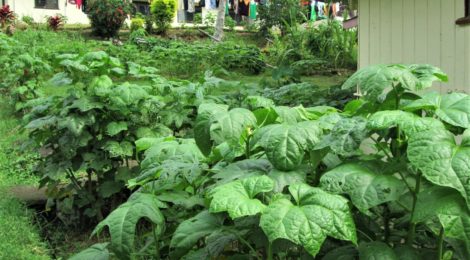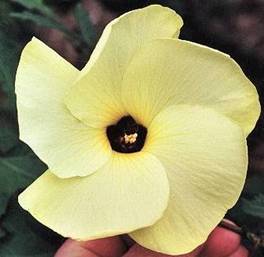
Important New Testing Of Natural (Delicious) Remedy For IgAN
Abelmoschus manihot is a beautiful spinach-like plant from the tropical world
Long established in Chinese herbal medicine as effective for kidney disorders
Now a major new clinical trial is about to get underway to give it thorough scientific testing
The herb is clearly safe as it is a major food item in many regions, it’s efficacy for kidney ailments is also long-established.
I have been living with my IgA Nephropathy for a quarter of a century. I’ve been a volunteer ‘lab rat’ in major clinical studies of the disease and a devoted auto-didact researcher in the field. My Stanford nephrologists were delighted to have me as one of their clinical lab rats when I was first diagnosed with rapidly progressive IgAN. They were difficult to deal with in terms of prescribing ‘out-of-the-box’ treatments of my condition, telling me I was 6 months to 2 years away from dialysis and transplant.
I found my own IgAN treatment in the medical scientific literature. It was tonsillectomy and was well known to work in many patients albeit not in the Ivory Tower medical institutes of the USA. The French doctor who was its main western proponent was the man for who IgAN, aka Berger’s Disease, was named, Dr. Berger was the first to identify its special characteristics. To make the long story you can find in my blog short, against the advice of my Stanford nephrology team I had the tonsillectomy performed. It halted, and even reversed, my rapidly progressive IgAN. This put me on a life long trail of keeping up with the entire field of science on this and related conditions including the ‘out of the box’herbal and lifestyle remedies.

While the large yellow flowers are very ornamental, the importance of this plant is that it is one of the world’s most nutritious leafy vegetables because of its high protein content. The leaves are tender and sweet and can be served raw or steamed.
Just recently I have become aware of the herb Abelmoschus manihot, otherwise known as edible hisbiscus. It’s a beautiful plant that grows in the tropics where it is also a delicious spinach-like vegetable. It’s been the subject of a number of clinical trials that you can find via this PubMed link. The medical method of making this wonderful plant into medicine assumes you want to concentrate the phytochemicals and take them in a tea or capsule. For me since this Polynesian spinach is so delicious I would far prefer to simply eat it several times per week. Surely the dose of active phytochemicals taken by eating will be effective.
Edible Hibiscus Leaf is the first of the alternative “spinaches” that I have taken an interest in. In Samoa and Tonga, they call it Pele. It is the lazy gardener’s dream plant. Big and very nutritional leaves that you can just pick from a bush. It is much easier to grow than lettuces and cabbages. You just stick a few feet of a stalk cutting into the ground and it will take root and produce.
Pele is a food plant that is grown throughout the South Pacific. In Samoa, it was not greatly used until a decade or so ago when there was a terrible virus that hit the taro leaves and suddenly Pele became the substitute green leaf. Pele and Taro may be freely interchanged in traditional and modern Polynesian recipes.
Recent Comments